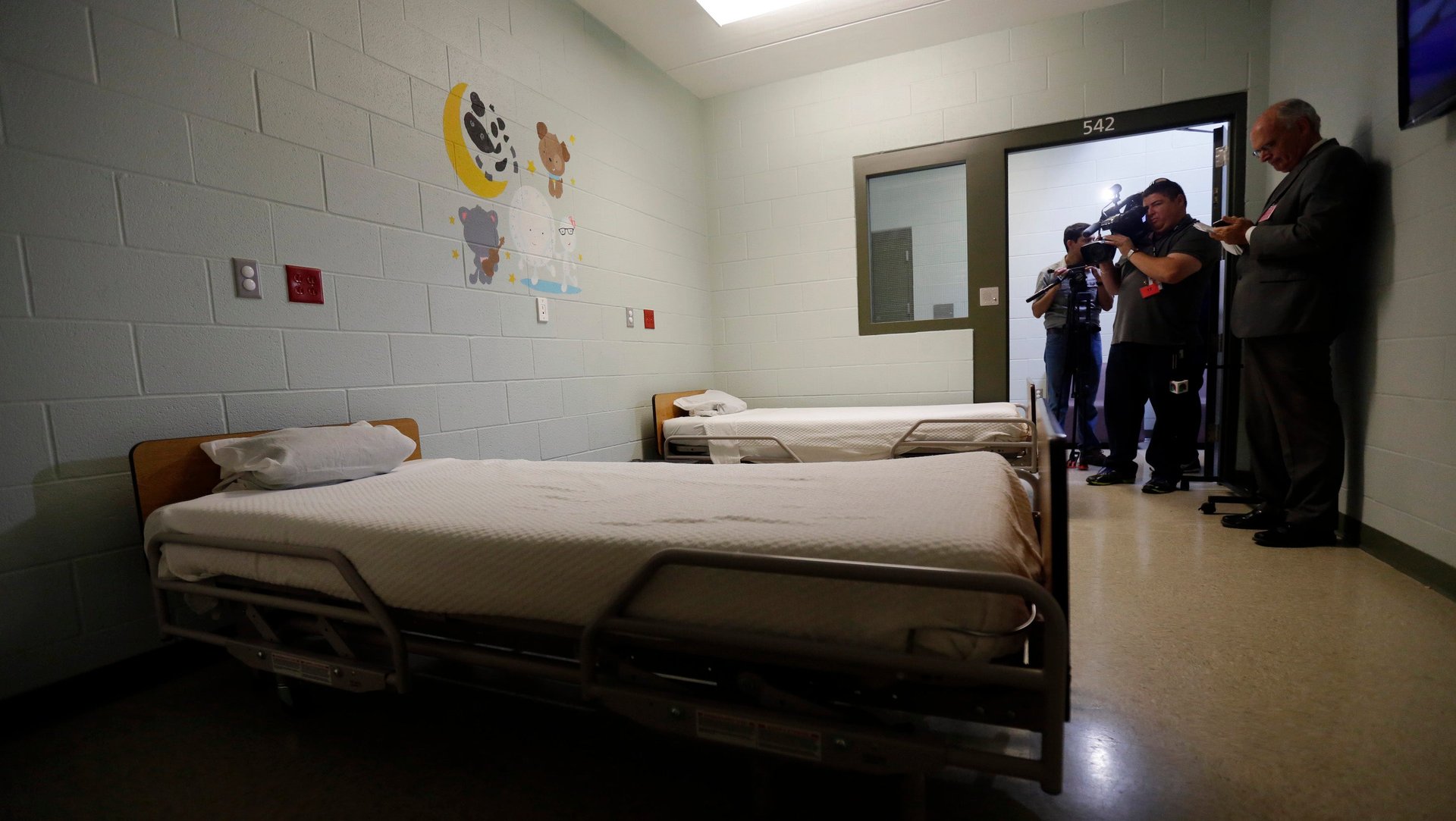US immigration authorities are shipping transgender detainees to a rural town in Texas
US Immigration and Customs Enforcement (ICE) is building a new immigration detention center in a small town in Texas with a special unit meant to house up to 36 transgender detainees. The Prairieland Detention Center, located 40 miles southeast of Dallas in Alvarado, Texas, is expected to open in November 2016, according to a spokesperson for ICE.


US Immigration and Customs Enforcement (ICE) is building a new immigration detention center in a small town in Texas with a special unit meant to house up to 36 transgender detainees. The Prairieland Detention Center, located 40 miles southeast of Dallas in Alvarado, Texas, is expected to open in November 2016, according to a spokesperson for ICE.
The center is the first to include a unit built specifically to house transgender detainees. Currently, some transgender women detained by ICE are held in California in a space rented from the Santa Ana City Jail. But officials recently voted to shut down that unit in 2020, following the release of a report by Human Rights Watch documenting abuses of the detainees held there.
According to ICE officials, the construction of a transgender unit in Texas is meant to improve conditions for transgender detainees. Transgender activists and advocates say it represents an expansion of an abusive system that can’t protect transgender individuals’ safety and rights.
Prior to last year, the government had no protocol for handling transgender detainees, according to Flor Bermudez, a director at the Transgender Law Center. In June 2015, ICE released a memorandum addressing the treatment of transgender detainees, instructing detention centers to adopt new provisions governing everything from strip searches, clothing options, and medical care to housing assignments.
The ICE unit at the Santa Ana City Jail agreed to implement the memo’s provisions on June 1, 2016, according to ICE officials, and the Prairieland Detention Center has also pledged to adopt the provisions upon opening in November. This does not guarantee better treatment, according to Adam Frankel, one of the researchers who helped compile the Human Rights Watch report on Santa Ana.
“Often the issue with immigration detention conditions is that a policy can be sent out, but it is often not carried out in the facilities due to lack of oversight and proper training,” he says. ”It’s concerning, in and of itself, that it took almost a year for any facility to adopt the provisions in the memorandum.”
Frankel says the current policy doesn’t allow transgender detainees to define their own gender. Instead, a committee of doctors decides how the detainee’s gender will be defined, and places the detainee accordingly. ”The way the language is constructed in the policy leaves open the possibility for many abuses to occur,” he says. “It leaves open the possibility that trans women are housed with men. And this happens all the time.” The new policy and the Prairieland Center are only “piecemeal steps forward,” according to Frankel.
“The system is not transgender competent,” says Transgender Law Center’s Bermudez. ”Even though ICE claims they have a transgender option, people will not disclose that they are transgender for fear of being sent to Santa Ana or put in isolation in a men’s center.”
Cases of immigrants housed in the Prairieland Center will be heard by the Fifth Circuit Court of Appeals, which is known to be hostile to pleas for asylum, according to Carmina Ocampo, a staff attorney at Lambda Legal.
Ocampo, Bermudez, and Frankel say that rather than locking up immigrants who have pending immigration cases, the government could enroll them in parole systems. “ICE detention centers by definition are supposed to be civil detention. But, in practice, the conditions are the same as prison,” Bermudez says. Detainees “should be in a community-based alternative program where they can come receive the services they need while living on their own. For example, someone would come in and get case management, or help with employment,” she adds.
Such an alternative would cost taxpayers much less than detaining transgender immigrants in an ICE center like the one in Texas, according to Frankel, which will cost between $1.4 and $1.9 million a month. ”It’s a more humane and cost-effective approach,” he says.